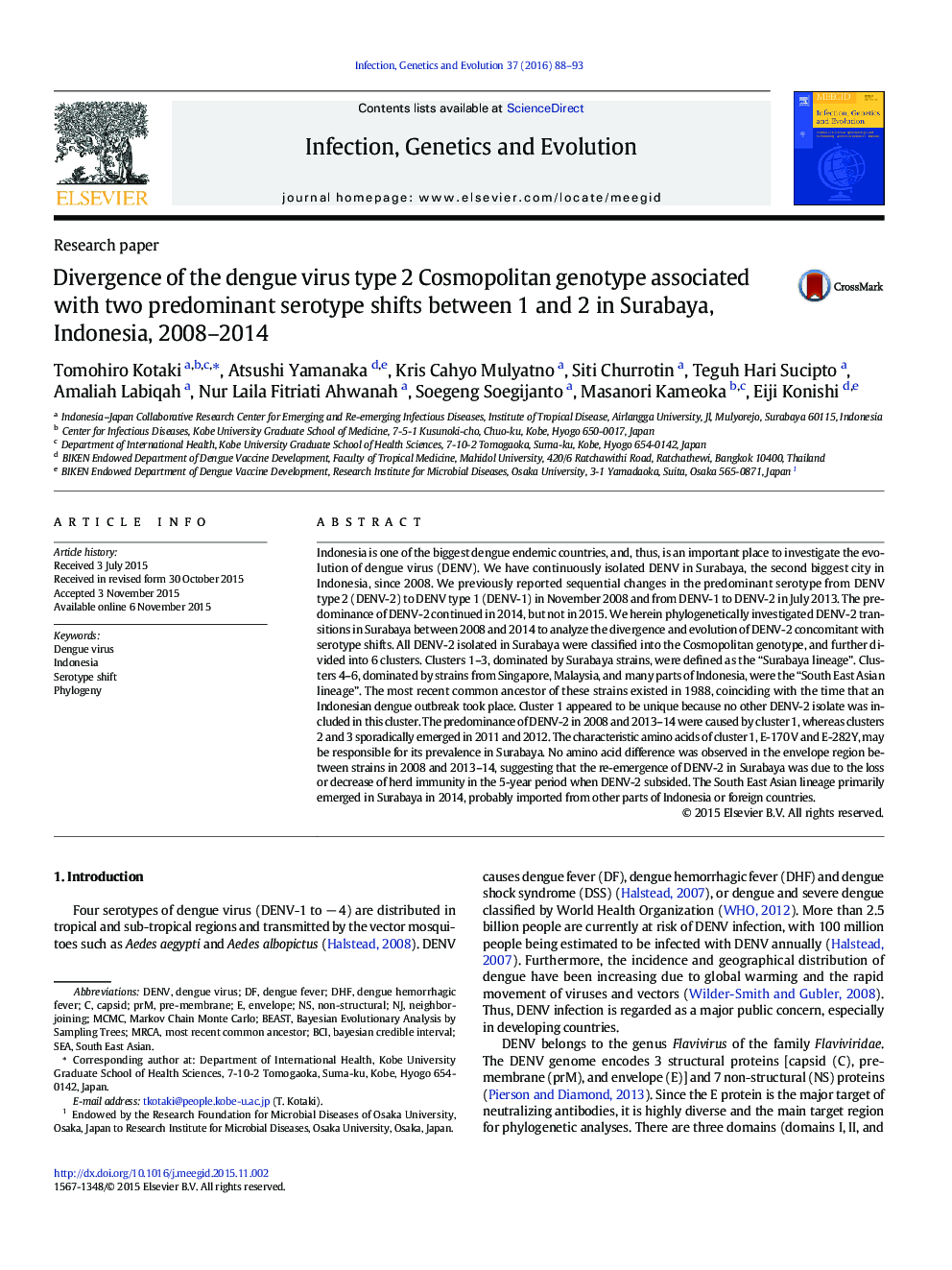| کد مقاله | کد نشریه | سال انتشار | مقاله انگلیسی | نسخه تمام متن |
|---|---|---|---|---|
| 5909082 | 1570166 | 2016 | 6 صفحه PDF | دانلود رایگان |

- We analyzed DENV-2 isolated in Surabaya, Indonesia, during 2008-2014.
- All DENV-2 strains isolated in Surabaya were classified into Cosmopolitan genotype.
- Predominant strain in Surabaya was distinct from other isolates registered in GenBank.
- Herd immunity may be related to the re-emergence of DENV-2 in 2013-14.
Indonesia is one of the biggest dengue endemic countries, and, thus, is an important place to investigate the evolution of dengue virus (DENV). We have continuously isolated DENV in Surabaya, the second biggest city in Indonesia, since 2008. We previously reported sequential changes in the predominant serotype from DENV type 2 (DENV-2) to DENV type 1 (DENV-1) in November 2008 and from DENV-1 to DENV-2 in July 2013. The predominance of DENV-2 continued in 2014, but not in 2015. We herein phylogenetically investigated DENV-2 transitions in Surabaya between 2008 and 2014 to analyze the divergence and evolution of DENV-2 concomitant with serotype shifts. All DENV-2 isolated in Surabaya were classified into the Cosmopolitan genotype, and further divided into 6 clusters. Clusters 1-3, dominated by Surabaya strains, were defined as the “Surabaya lineage”. Clusters 4-6, dominated by strains from Singapore, Malaysia, and many parts of Indonesia, were the “South East Asian lineage”. The most recent common ancestor of these strains existed in 1988, coinciding with the time that an Indonesian dengue outbreak took place. Cluster 1 appeared to be unique because no other DENV-2 isolate was included in this cluster. The predominance of DENV-2 in 2008 and 2013-14 were caused by cluster 1, whereas clusters 2 and 3 sporadically emerged in 2011 and 2012. The characteristic amino acids of cluster 1, E-170Â V and E-282Y, may be responsible for its prevalence in Surabaya. No amino acid difference was observed in the envelope region between strains in 2008 and 2013-14, suggesting that the re-emergence of DENV-2 in Surabaya was due to the loss or decrease of herd immunity in the 5-year period when DENV-2 subsided. The South East Asian lineage primarily emerged in Surabaya in 2014, probably imported from other parts of Indonesia or foreign countries.
Journal: Infection, Genetics and Evolution - Volume 37, January 2016, Pages 88-93